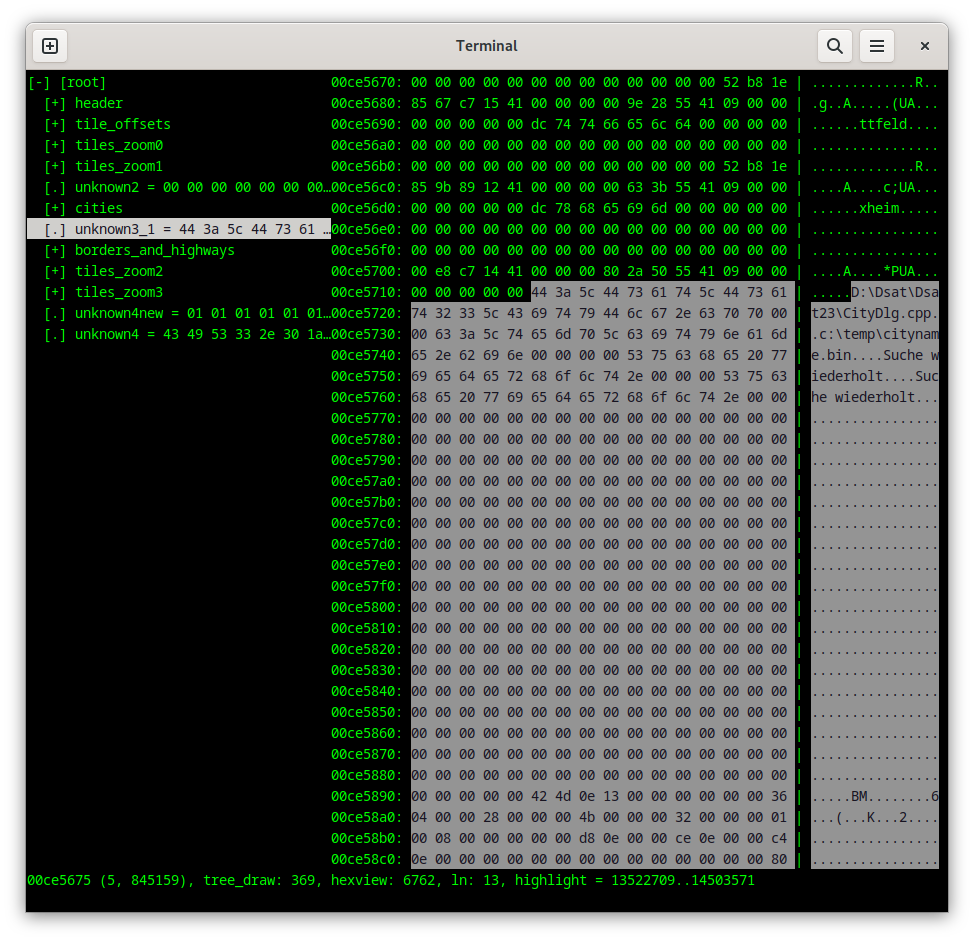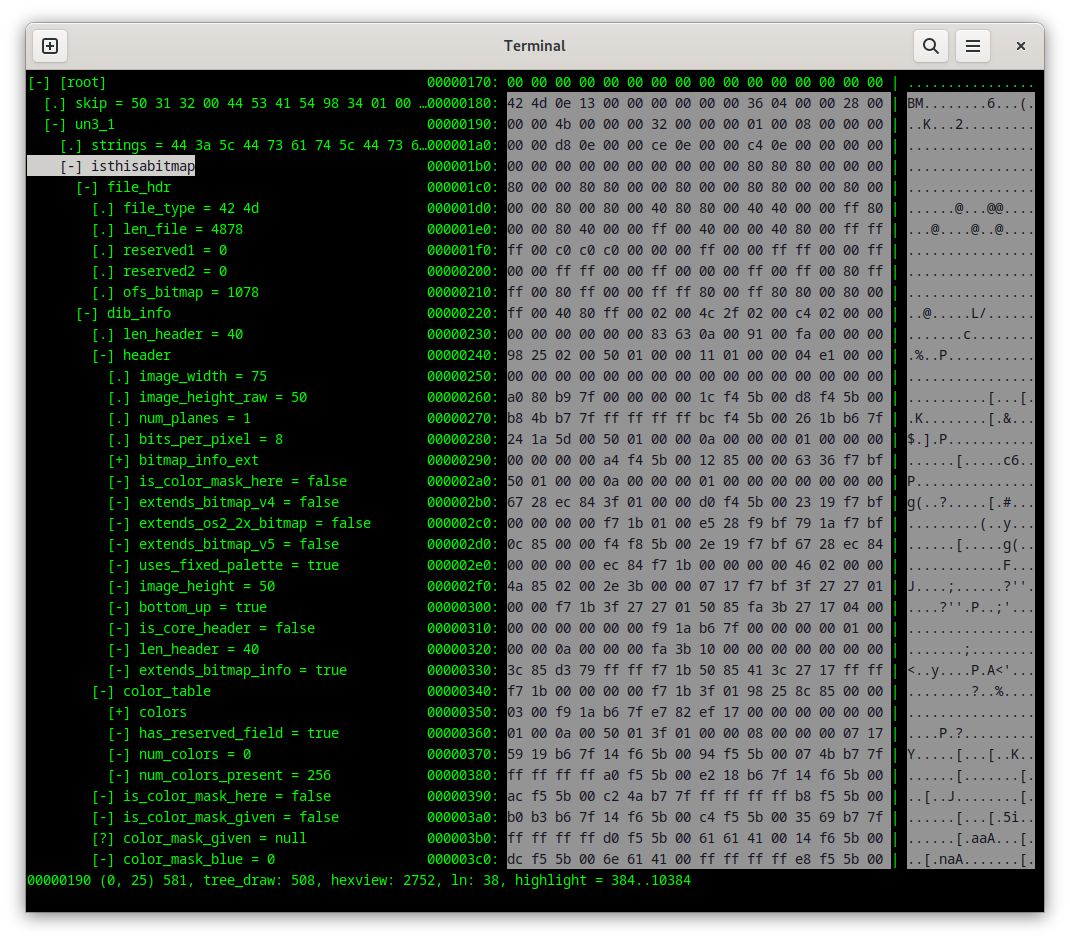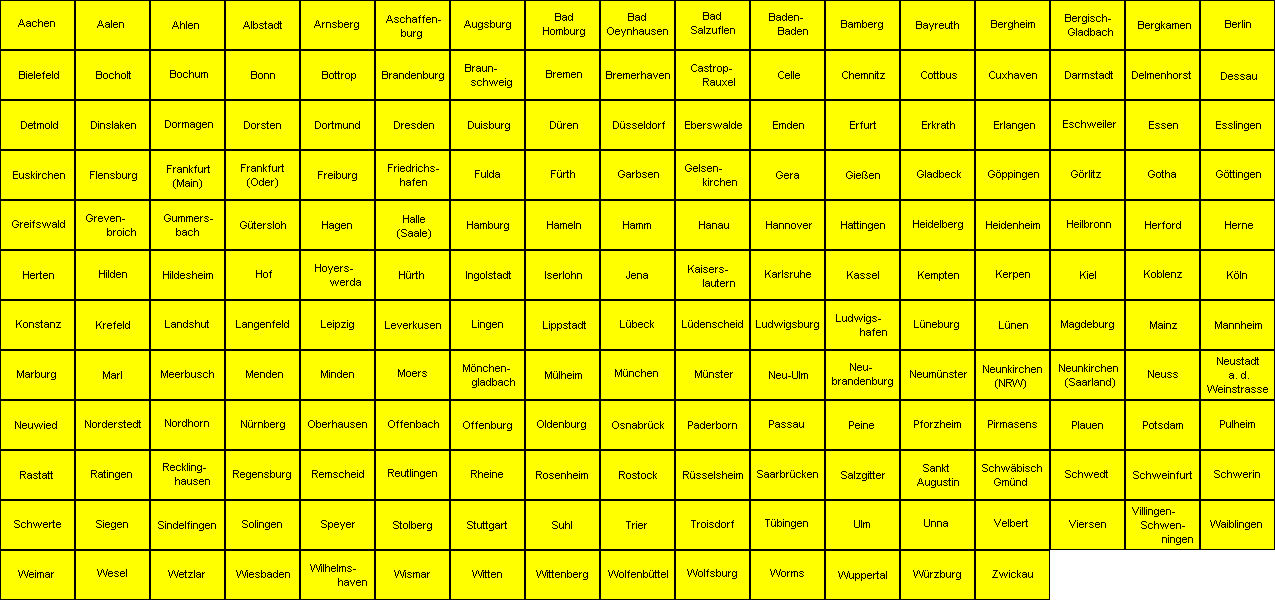Finding something unexpected again
This week I was poking around in the few remaining unknown territories
of dsatnord.mp with the excellent Kaitai Struct
Visualizer
(ksv) again. I have known for quite some time now that the city
database is followed by
some strings that seem to be related to the development of that
database, namely D:\Dsat\Dsat23\CityDlg.cpp and
c:\temp\cityname.bin. When I showed my colleagues that part using
ksv, it looked like this:

At the left we see the structure I have identified so far and right of it we see the hex values of the data and their ASCII counterpart (if it exists). The grey background highlights the so far uncharted part after the city database that starts with the mentioned strings.
While inspecting the hex values someone said “look, down there it
continues with ‘BM’ – is there a bitmap?” Indeed, the abovementioned
strings are followed by several null bytes and then we can see the
byte sequence 0x42 0x4d or BM in ASCII. Having written a parser for
Windows Bitmap files
a couple of years ago and, more recently, Python code to write such
files byte by byte, I also immediately recognized this as the format
indicator for Windows Bitmap files. So let’s inspect this closer!
And here the power of Kaitai Struct comes in, as its collection of file format definitions contains one for bitmap files. So I just grabbed the specification file and included it in a brief specification that basically skips the data up to the relevant part:
meta:
id: unknown3_1
endian: le
imports:
- bmp
seq:
- id: skip
size: 16 + 316004 + 754077 + 9056940 + 2538456 + (13394 * 64)
- id: un3_1
size: 980862
type: un3
types:
un3:
seq:
- id: strings
size: 24*16
- id: isthisabitmap
type: bmp
size: 10000
Opening ksv with ksv dsatnord.mp unknown3_1.ksy gave no warnings or
error messages but instead showed this:

So this could indeed be a bitmap file, 75 pixels wide and 50 pixels
high. It’s size should then be 4878 bytes (field len_file) and thus
I used dd to extract that part:
dd if=dsatnord.mp of=bitmap.bmp bs=1 skip=$((16 + 316004 + 754077 + 9056940 + 2538456 + (13394 * 64) + 24*16)) count=4878
Here’s the result:

A town sign of Aachen! What a surprise.
The obvious question then was: what comes next? A quick look at ksv
showed another BM sequence right after that bitmap. So there’s more!
What is it? Look:

Another one! You can now probably guess what happened: it’s not just two but more … but how many? 201! Here they are (conveniently arranged in a 17 by 12 grid):
These are all town signs of larger German towns. I first thought these might be the district towns (“Kreisstädte”) but since Germany currently has only 294 districts (“Landkreise”) this cannot be true. Due to local government reorganizations in the past decades the number should have been even higher in the 1990s. So another mystery to solve.
What I found also remarkable is the fact that 4878*201 = 980478 bytes (more than a double density DOS-formatted floppy disk could fit) were used to represent very simple town signs in an uncompressed image format. The code to create the signs at runtime should have required much less space but maybe there was no time to write the code.
(The Kaitai Struct specification now also includes the town signs.)
